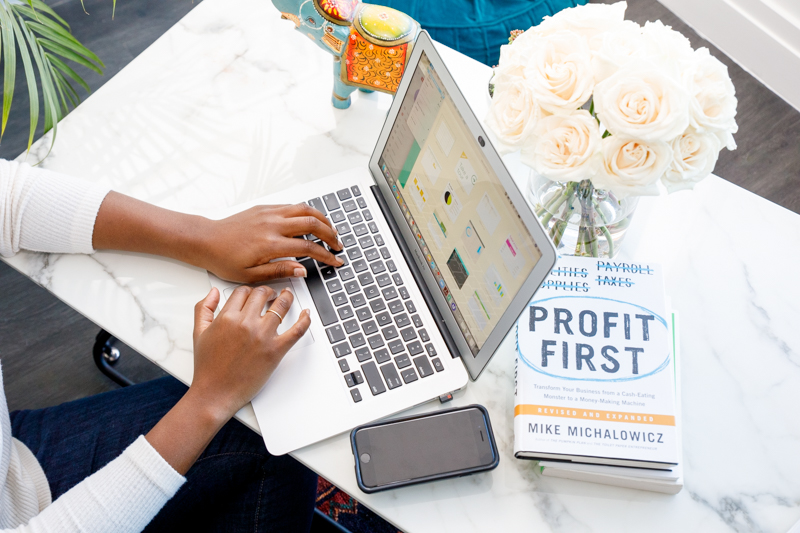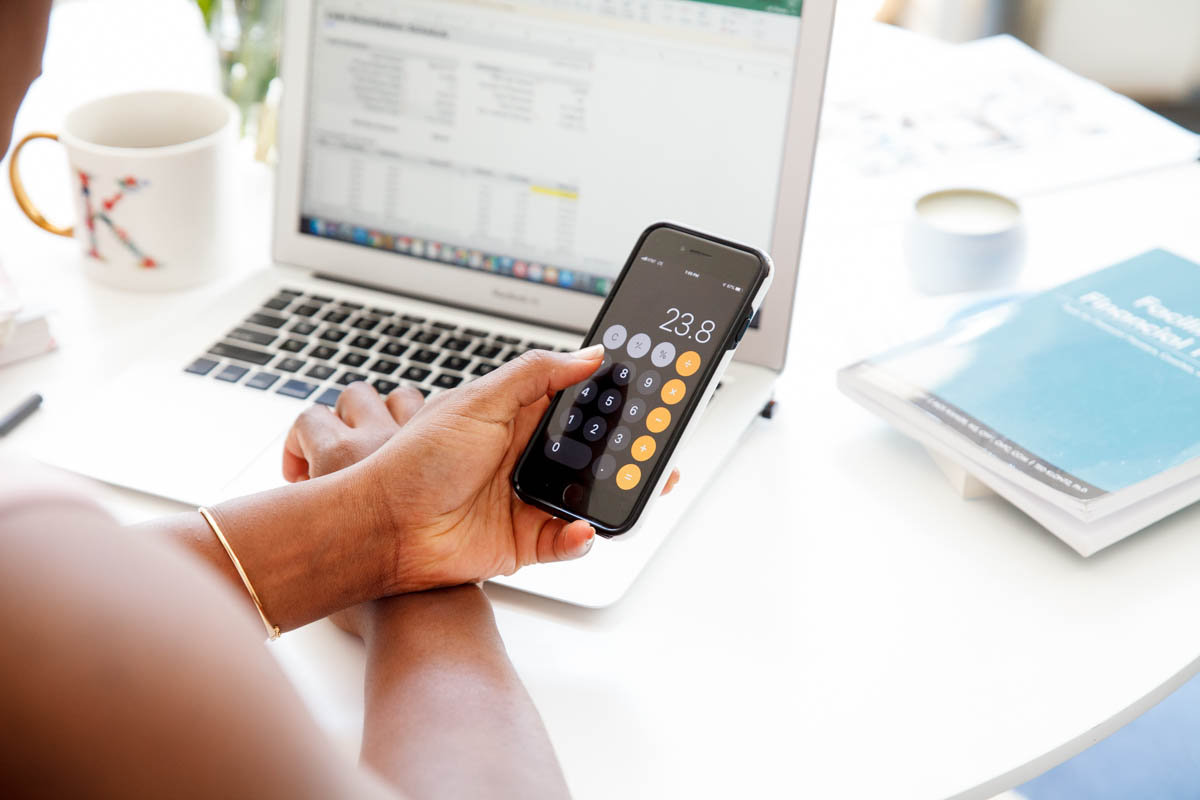The number one problem my clients need help solving is knowing how they can use their money each day to save. How much money is for bills? How much money do they have to spend? How much money can they save for their goals and still have money to enjoy?
Maybe you can relate.
Before working with me, so many of my clients have a bank account budgeting system. You know the one where you see money in your account so you swipe. They use their bank account as a tool to decide whether they can go to brunch with their friends or book a plane ticket. Or right now, it might look like deciding you can afford the Peleton bike because the numbers in your account say you can afford it. Or you’re saying ‘yes’ to ordering food or buying gift cards to support small businesses simply because when you look at your bank account, it says you have the money. But you’ve given no real consideration to how that will impact you a week from now, a month from now, or even a year from now because you do not have a system in place to manage your finances.
Today I want to share the system I teach my clients to help them save consistently, set aside money for bills, and know exactly how much they spend. (It’s also a system they LOVE.) This system has been a game-changer in knowing how much money they have to spend between paychecks. This system allows them to set aside money for bills without worrying if they’ll accidentally spend it before the bill is due. This system has allowed them to save consistently without constantly dipping into their savings. This system has put them in control so they have ease about the decisions they make.
In my one month intensive, I teach clients how to use this system along with their spending plan so they have the ultimate clarity. You can set this plan up for yourself using the steps below and gain instant relief because you’ll know exactly how your money is set up to serve you.
Here’s how:
1. Establish an account you only use for savings.
Maybe you already have a savings account but you do not use it to consistently save and work towards your goals. In fact you might have a few hundred dollars in the account or no money at all. No matter where you are this will change as you start to implement this system. I want you to start using this account with regularity. I want you to determine how much money you want to set aside towards your emergency fund, Christmas savings, vacations, and anything else you might be saving for in between. So, if you decide that you need to save $200 a month to reach your goals, I want you to commit to automatically depositing this amount in your account each month. In fact, I want you to commit to setting up the payment each payday. So if you’re paid twice a month, you’ll automatically transfer $100 to your savings each payday. This account is only for your savings. It’s not to be used to cover your overspending.
2. Establish an account you only use for bills.
Maybe your bills are paid on time each month or maybe you struggle to know if you’ll have enough to pay your bills because sometimes your spending dips into your bill money. That’s why you’re going to create a bills account. Once you’re clear on how much money you set aside each paycheck for bills you’ll deposit this exact amount in your bills account. The money in this account will only be used for your bills. This money is not used for spending on everyday things, this money isn’t used for savings, this money is used for your financial obligations like rent, your cell phone payment, and your monthly Netflix subscription.
3. Establish an account you only use for spending.
The last account I want you to set up is a spending account, a guilt-free spending account. You see you won’t have guilt with this account because this is money you’re going to intentionally set aside to spend. Money you know you can spend that will not impact your savings goals or your bills getting paid each month since we’ve already set aside money for your savings and bills. You’ll determine how much goes in this account after you’ve decided how much you want to save and how much money you need to set aside to pay your bills.
Sometimes our own narrative holds us back from moving forward with our finances. Having three separate accounts may provide the exact clarity you need to move forward and finally start saving consistently each month and move beyond the paycheck to paycheck cycle. For one of my clients, this made her budgeting come to life. Prior to working with me, she had a budget. She would track her expenses at the end of the month and she had some savings. But shifting to this system helped build her confidence because she could be more intentional about day to day purchases such as groceries, eating out, and gas while also focusing on and meeting her monthly savings goal. If you know you want to leave bank accounting budgeting behind I invite you to schedule a call so we can co-create these results for you.
All the best,
Keina
P.S. Maybe you’re wondering if this system could really be the difference you need. I want you to know investing in a financial coach will help you make your personal finance journey personal. Let me introduce you to Maggie. We worked together in the one month intensive. She traded bank account budgeting after our first call and since then she’s saved over $2,000 in less than six months, paid off over $3,000 in credit card debt, and she’s completely stopped using her credit card.


